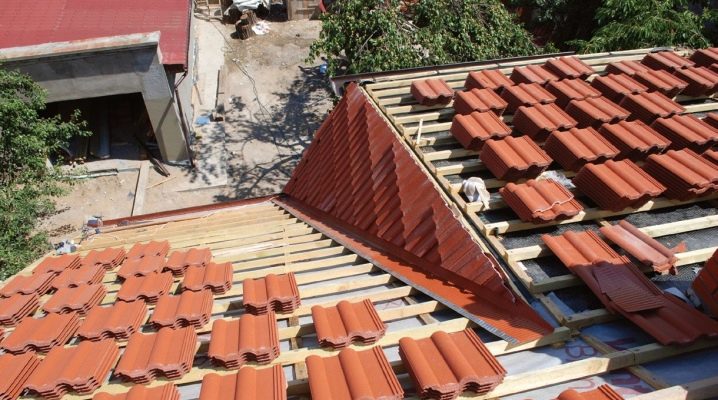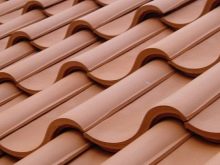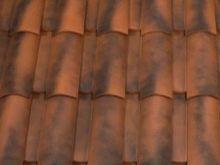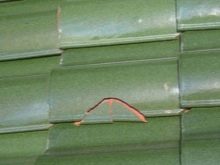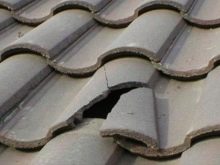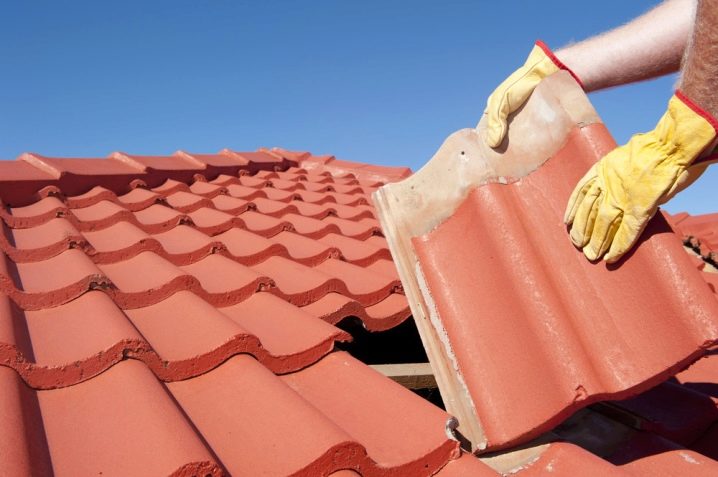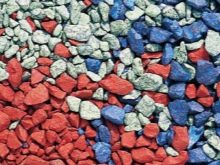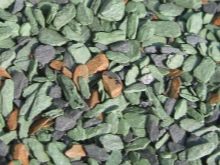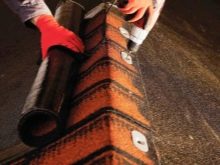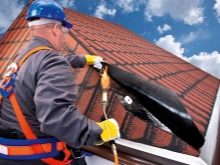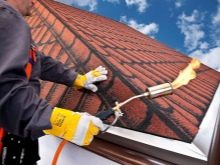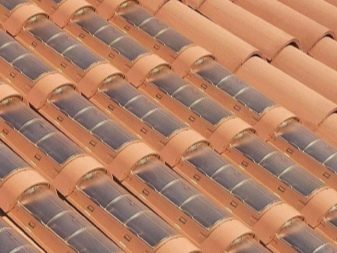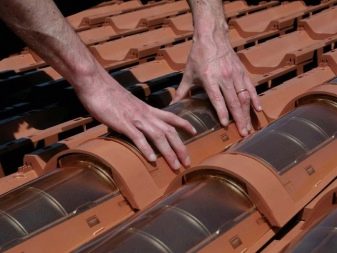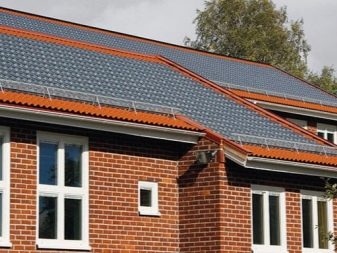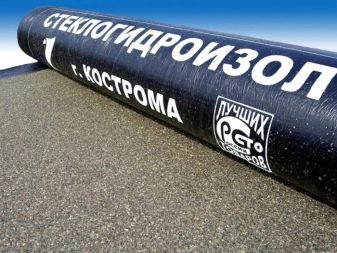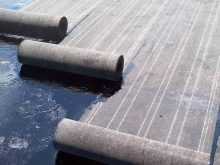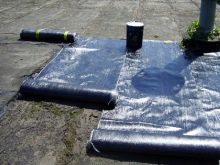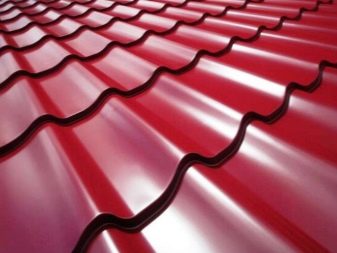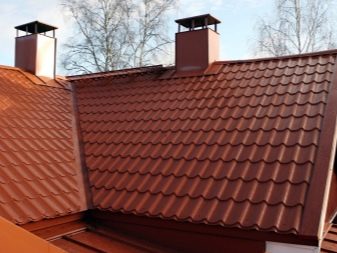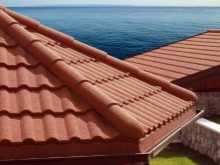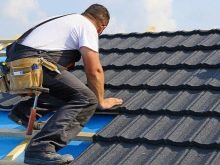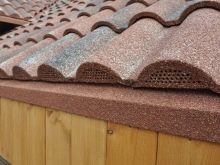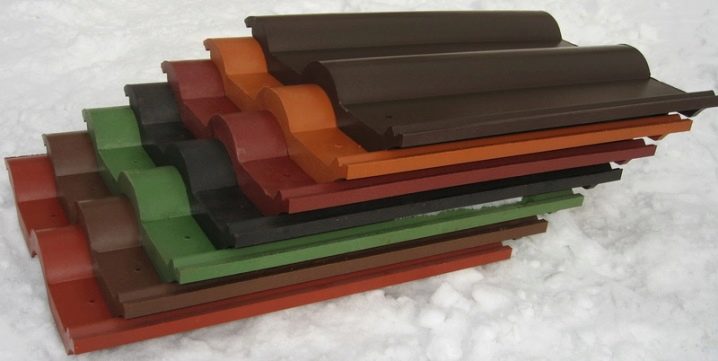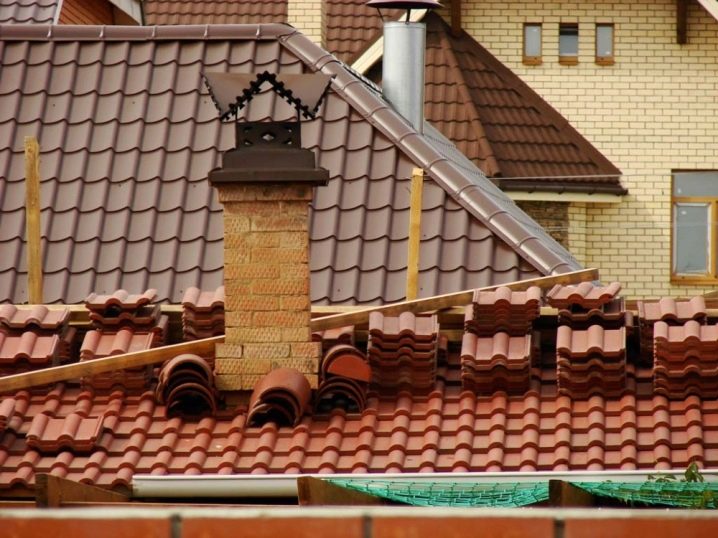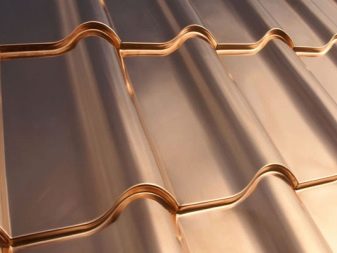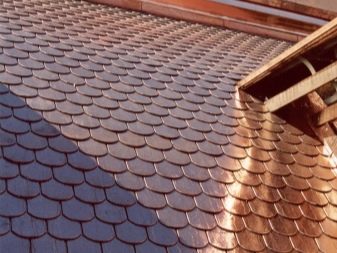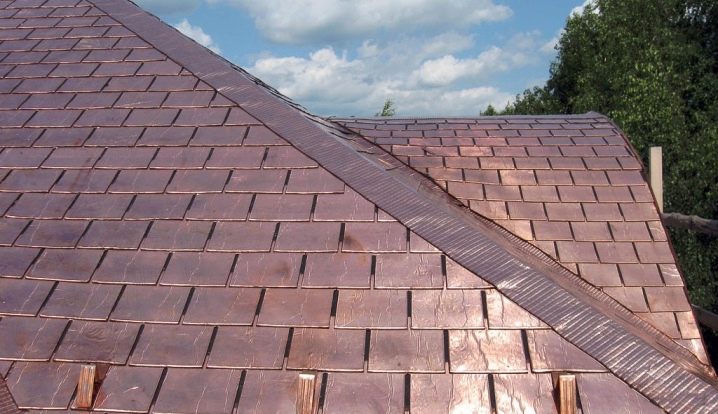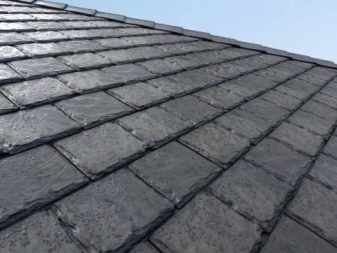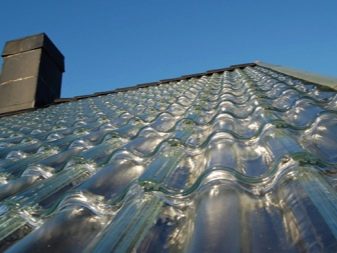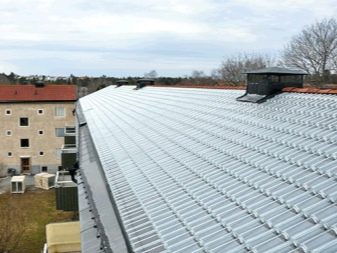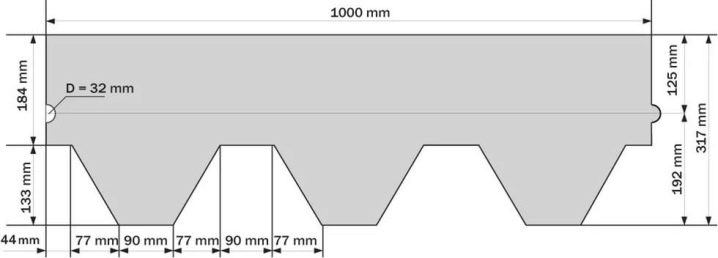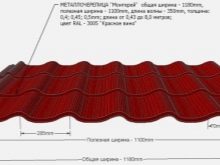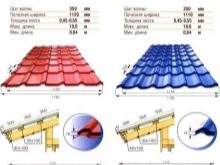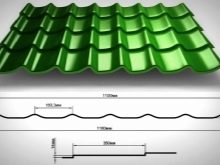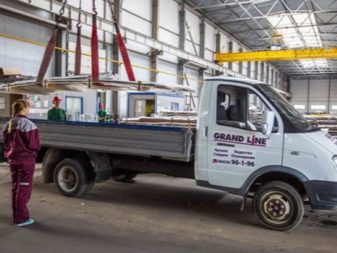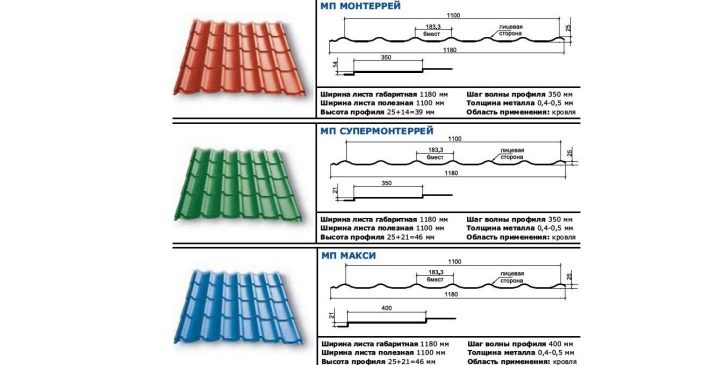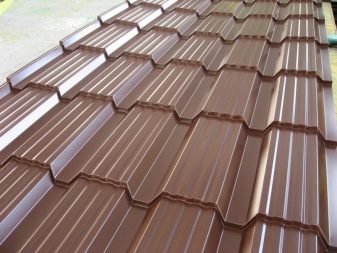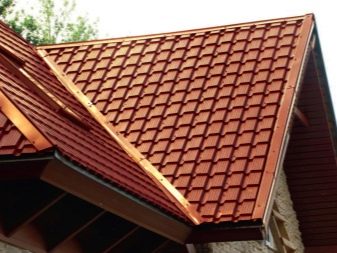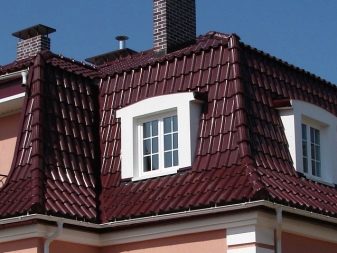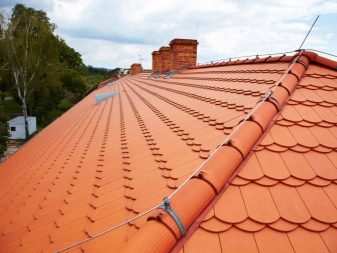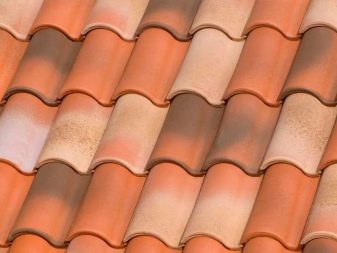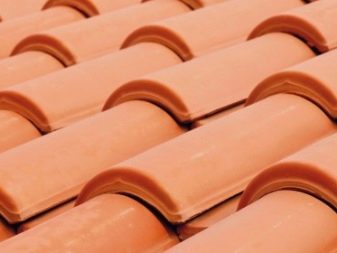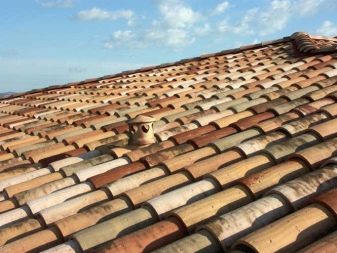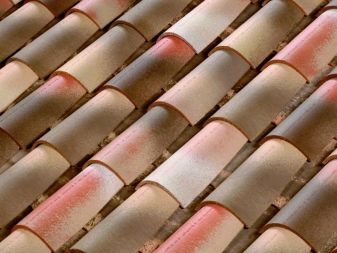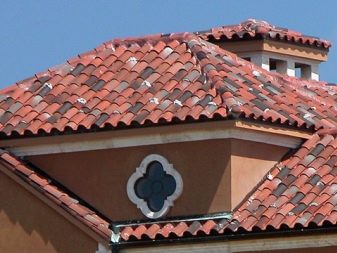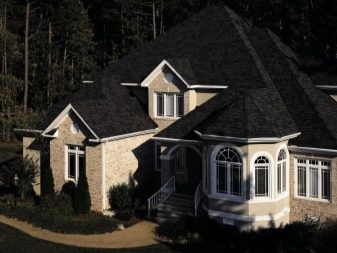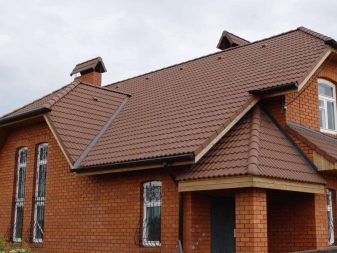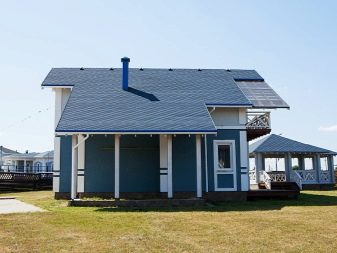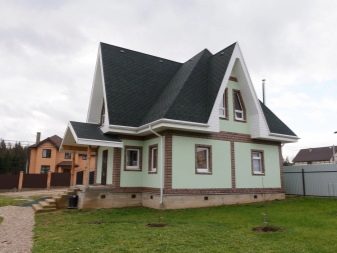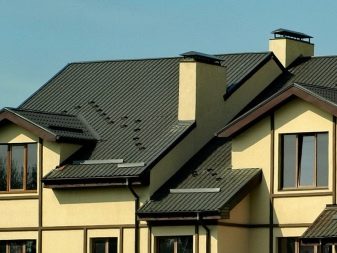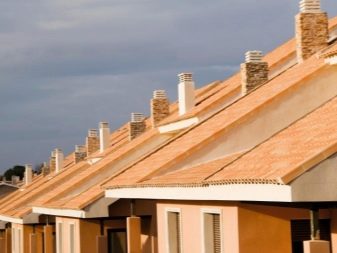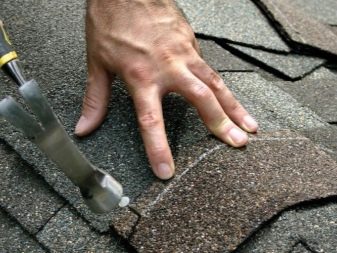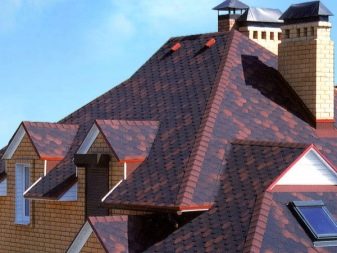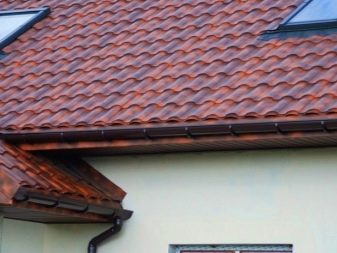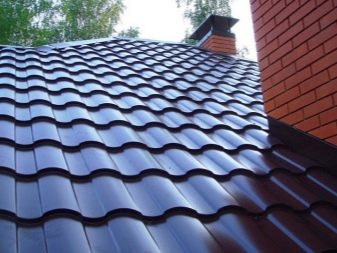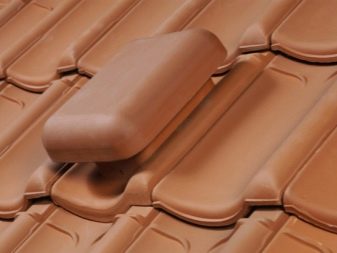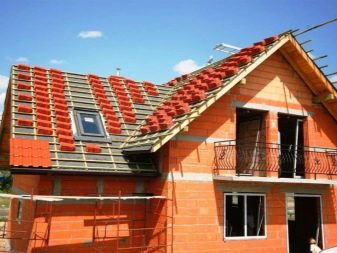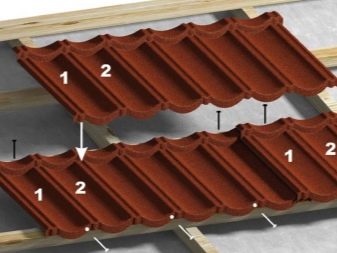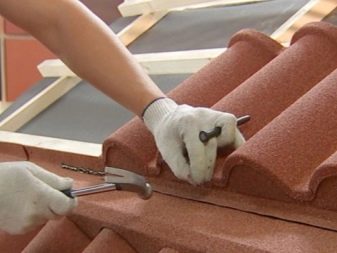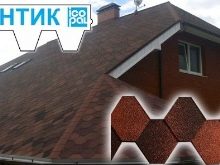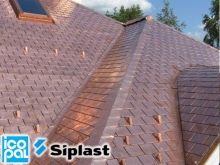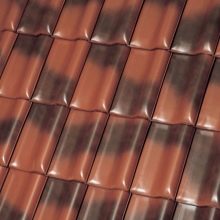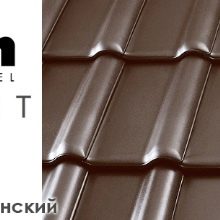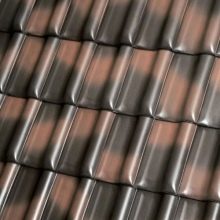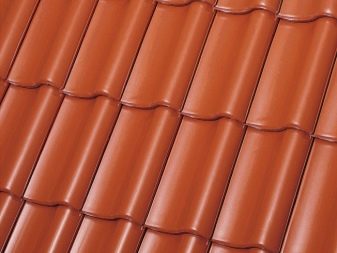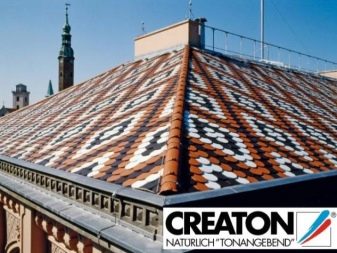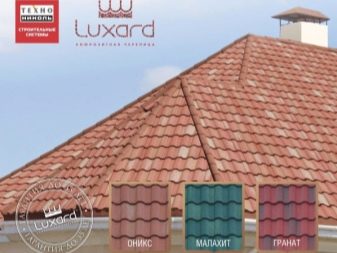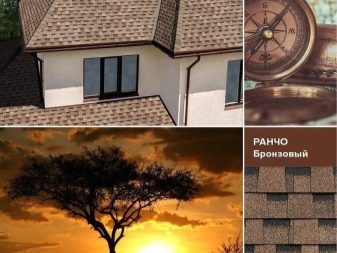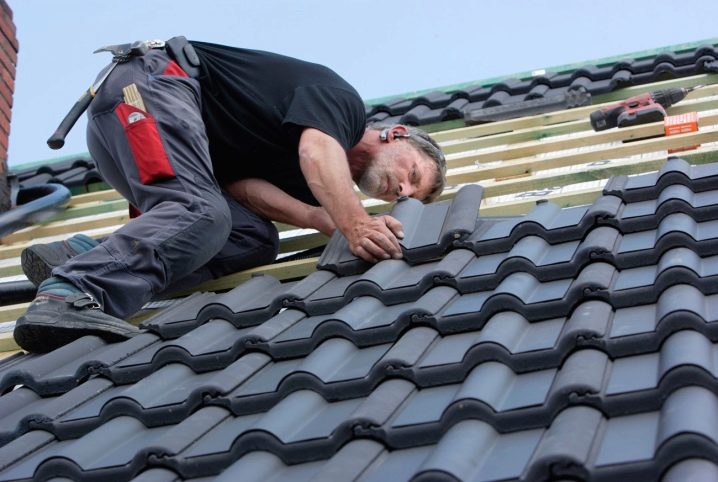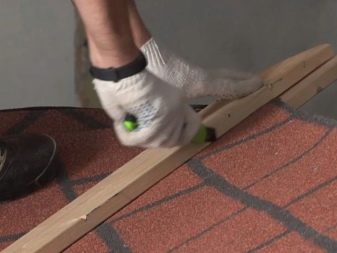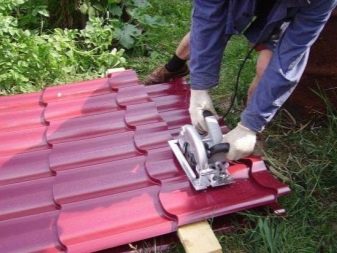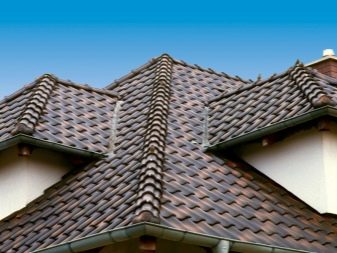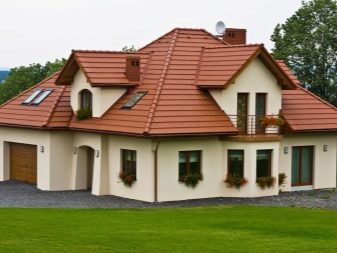Tiling: types and use in construction
Roof covering completes the construction or repair cycle. But in order for the result to look nice and good, you should take care of choosing the right option in advance. Among the most popular solutions invariably turns out to be tiles of various kinds.
What it is?
GOST on ceramic tiles provides that the spikes should be no higher than 1 cm, and the grooves should be a maximum of 0.4 cm in depth. The set of small identical blocks allows you to create an attractive type of construction and solve the design problem fully.
Depending on the needs of the customer, the surface of the tile can have various formats:
- smooth and naked;
- glazed;
- engobed;
- trimmed in a different way.
When dealing with the properties of tiled materials, it is necessary to take into account that a slight difference in tones, burrs along the edges, a slight roughness according to the standard are allowed. But broken areas, cracks are categorically unacceptable.
Ceramic coating must be hydrophobic, transfer up to hundreds of cycles of freezing and heating without consequences. The device of ceramic tiles allows it to work for at least 100 years and not suffer from ultraviolet radiation. Even the natural range is very wide, and if necessary it can always be expanded using a variety of dyes; the only problem is the weight of ceramics.
The longer the tile is, the more dense and saturated its tone becomes. This material has long been insufficiently smooth, but as a result of improvements made over the past 200 years, this deficiency has been completely overcome.
Unlike metallic materials, tile is not susceptible to corrosion. A wide variety of options allows you to choose the optimal solution for any occasion.
Special features
The use of soft tile has the following advantages and disadvantages:
- easy installation;
- prolonged use;
- the inability to use on roofs slope less than 12 degrees;
- tolerance of wind and snow loads.
For many hundreds of years, soft tiled coverings have been used very actively, which is the best recommendation for them. The quality of modern products is practically not inferior to the strongest metal and ceramic structures. Fiberglass, which is treated with modified bitumen, allows you to simultaneously ensure the strength and flexibility of the coating.
The front part has an additional reinforcing layer, which are:
- fine crumbs of heterogeneous minerals;
- granulated basalt;
- shale sprinkle.
The disadvantages of soft shingles are described in the video.
Kinds
Roll
Roll roofing tiles are claimed by manufacturers as a solution ideal for low-cost construction and repair. Suppliers of such products emphasize that it is both cheap and aesthetic. The fortress is provided with a base material - reinforced with polyester, bitumen overlapped (that plays the role of ligament).
What matters is how quality bitumen is used. It depends on the service life of the material and the reliability of protection against water. In appearance, such a coating can not be distinguished from the natural or bitumen masonry of a traditional look.
This eliminates the need to use a gas burner with an open flame: the rolled sheet can be applied in a safe mode. Designers have taken care of the improvement of bitumen, so that it is more effectively glued to the base. This solution allows to increase the reliability of mounting on a steep slope, even without the help of specialists.
It is important to bear in mind that roll bitumen tiles in highlands can only be used with snow protectors.
Also a big problem with its use is limited operation time - no more than 20 years, even in ideal conditions.
With photo cells
For the roof with photocells, you will have to pay a lot of money, but solar energy will be available and will become a reliable insurance against power outages. At the same time, there is no need to donate a considerable share of the site for the placement of solar batteries.The use of this method of generation saves the environment and does not pose any threats to the people themselves.
Not so long ago it was thought that equipping a roof with solar panels was expensive and did not pay off. But changes in the market in recent years have made such an assessment obsolete.
IFEM, or integrated photovoltaic materials, make it possible to dispense with the additional attachment of generators - they are initially part of the tile. Rolled solar energy storage is relatively light, it is almost impossible to distinguish them from conventional ones. Only the size is slightly larger, because otherwise the batteries cannot be built in.
As for the minuses, they are also obvious - the solar tile still costs more than comparable in other characteristics with ordinary facing. In addition, it will not be possible to use the roof for any economic or leisure purposes.
Ruberoid
Classical roofing material roofing somewhat lost its position, but still remains among the most sought-after technological solutions.
Glass ruberoid supplanted traditional roofing material, therefore:
- rotting is prevented;
- increased wear resistance;
- increased service life.
Flexible rolls of roofing material and glass-ruberoid are used only on roofs, the steepness of which is limited to 30 degrees. If the construction is cooler, the material may melt and break more quickly.
A prerequisite is the formation of all 2-5 layers of roofing material in one directionThis eliminates the appearance of weak zones. Soft tiles are used where you need to make a steeper roof; The basis of the material is fiberglass, and modified bitumen has already been applied to it. The front shell is created using stone chips, mostly basalt.
Metal constructions
The choice of soft tile is preferable if you want to cover the roof of an atypical configuration. To do this with rolls is much more difficult. Metal tile coating is used when they want to guarantee both external appeal and high strength of the roofing pie.. If such a product is produced and laid according to all the rules, it will be resistant to significant heating, will not burn out in the bright sun and will not fade.
Installation of metal structures is not particularly difficult,it can even be produced by non-specialists.
Details about the installation of metal tiles described in the next video.
Compositional
The tile can be not only flat - its compositional (two-layer) type occupies a solid position in the market. Many modern manufacturers make such a product from SBS-advanced bitumen.
This technological solution allows you to:
make the roofing system more reliable;
achieve a tight pressing of the granules to the substrate;
enhance protection against water penetration;
complicate the destruction of the material under the action of a bending and tearing load;
maximize uptime.
Composite roofs are very resistant to wind, and install such a coating is obtained without special knowledge. Retaining flexibility even in the cold significantly facilitates installation, and repair, and subsequent maintenance.
The disadvantage is that the presence of two layers at once can cause the splitting of the laid material. It is also worth considering that the presence in the substrate of a metal sheet makes the "cake" impermeable to water vapor. In many cases, this becomes a source of serious problems.
Material
Polymer tile
A vivid example of how modern technology is changing the traditional look of a roof. Compared with the classic clay tiles, this material is 50% lighter, and in addition wins in price.
It’s even embarrassing to compare the degree of isolation from heat leaks and extraneous noise with metal tiles. Moreover, the polymeric nature of the design completely eliminates corrosion processes. Workers can restrict the preparation of the surface "in general", not bringing it to the ideal.
The coating is much stronger than when using bitumen. Ultraviolet rays and temperature jerks do not have a harmful effect, which has been repeatedly confirmed by the results of laboratory checks. Sand tile works stably in the temperature range from -65 to +100 degrees.
According to calculations using the latest chemical and physical concepts, a polymer film can decompose in about 100 years. Thermoplastic composite has a low level of water absorption, and therefore the occurrence of mold nests, moss thickets is excluded.
As a result of testing, it was also found that the resistance to acid rain in this coating is higher than that of metal and concrete structures.
Consumer reviews indicate that after a while, the polymer sanding roof may become thinner due to erosion. It does not affect its practical properties, but problems sometimes occur in the castle connections. Violation of their tightness facilitates the penetration of liquid into the inner layers of the cake.
The choice of goods is also a very important matter - fake modifications are widely represented on the market, as well as products based on low-quality raw materials.
The advantages of this type of tile is described in the video below.
Copper
In the absence of special restrictions in the means can be selected and copper roofing tiles. Unfortunately, there is no reason to believe that the cost of such coverage will decrease in the foreseeable future. But it will definitely serve over a century.
Unlike other options, the developers of which achieve the maximum inertia of products, copper inevitably changes with time. But this is its advantage - during the “service” copper surfaces are covered with a noble patina and become only more elegant.
Copper tiles are relatively small, which makes it easier to lay out even the most complex tower profiles. At the same time ease of coverage is guaranteed, and the thickness of the material does not exceed 0.8 cm.
In addition to the increased cost, copper roofs are soft.
Mounting them should be done carefully, and moving on such a roof resembles a circus attraction of high-rope-walkers. Pieces for the most part mounted on a false roof - initially formed a full-fledged practical layer, and then goes decorative copper.
Rubber
If you want to save money and get a decent quality, many people opt for rubber tiles. Ecological characteristics of such material are quite decent, moreover, it is made from recycled materials - unwanted automotive protectors. The technology is quite complex, but the result is definitely worth the effort.
Using the side grooves to mount the rubber blocks is very simple, and also guaranteed no leakage. Dynamic strength is very important because rubber stretches and contracts without deformation.
This circumstance, as well as chemical inertness, increases the service life without loss of structural characteristics at least up to half a century. Cold and wind, hail and rain showers will not leave a mark on the rubber surface.
Lightweight blocks are mounted without any problems, exerting only minimal pressure on the walls and foundations.
The rubber does not rot, but it also has weak positions: a tendency to fire and significant heating in hot weather. In winter and after rain, this material becomes slippery.
Glass
Glass tile modification has its followers. It first appeared in the 1930s, although some marketers insist that this product was created about ten to fifteen years ago. Anyway, the appearance of this roofing will appeal to the most sophisticated aesthetes.
Skillful builders, having united the efforts with the prepared designers and having used LED illumination, can create from it a masterpiece. An additional advantage is the ability to improve the illumination of the attic, you just need to lay out a kind of “window” (although you can leave the entire roof transparent).
The glass tile steadily works not less than 40 years. It can be docked with ordinary ceramic materials. Produces this product a number of manufacturers, including foreign companies of world class. The use of tempered glass makes it possible not to be afraid of destruction under the influence of the weather element. At the same time, the product does not exceed the usual ceramics by weight, or even turns out to be slightly lighter.
Details of the glass tile in the video below.
Dimensions
Choosing the appropriate type of tile material for the roof, you need to understand even with its dimensions. The values of ceramic tiles are not fixed in state standards, so developers can take full initiative. In metal, the situation is better, but even there the products of different companies do not always fit in with each other.
Standard blocks are 118 cm wide, although there are products from 111.5 to 119 cm on sale. Important: products that meet international standards are normalized in width stricter than in the Russian Federation - this allows you to confidently distinguish obvious falsification.
The useful dimensions in width are usually 1.1 m, and this parameter is much more significant for calculating the need for roofing material. Sheets of steel tiles are laid one on another.Because it is important to consider that the typical overlap varies from 6 to 8 cm. From the size of the lining and calculate the difference between the formal dimensions and the actual size.
These proportions are not accidental, they provide:
tightness of seams;
effective resistance to winds and snow;
resistance to moisture penetration.
For steep roofs, the size of the overlap of sheets grows to 10 or even 12 cm.
Sheet tiles from 40-365 cm long descend from the conveyors of plants. It is recommended to buy such sheets that coincide in size with the ramps.This allows to obtain monolithic structures with the minimum number of joints and without excessive waste. Acquisition of metal tiles longer than 450 cm is possible to order, but it is impractical.
The transportation of such material is complicated, as well as the rise on the roof; there is a risk of breakage of the wall finish or damage to the parts themselves.
In addition to the linear dimensions of the tiles, you should pay attention to the profile of the waves. In the production of an economical class, it is made from 1.2 to 2.8 cm. But a wave with a height from 3 to 5 cm is characteristic already for the optimal and elite categories. If you want to ensure the highest reliability, you should prefer material with a profile over 50 mm. Even when a heavy wind and rain fall on the roof at the same time, it will resist and protect the underlying layers from leaks.
The wave step of 18.3-18.5 cm, according to the experience of many years, is the most convenient and reliable in terms of weather protection. It is easiest for people to walk on such tiles. Lengthening the pitch reduces stiffness and makes work surfaces shorter. Because the total cost of work increases markedly.
It is recommended to check before purchase whether the waves are tightly fitted to each other - non-observance of this condition causes extra costs.
Metal tile thickness up to 0.4 mm inclusive is damaged very easily, even with careful installation. Such steel quickly oxidizes and corrodes, which does not allow us to hope for long-term operation.
Reliable and high quality coatings are 0.4-0.6 mm thick, and it is difficult to find the best option for investing in repairs.
Thicker metal is more expensive and more difficult to mount. The severity of such structures and the pressure they exert on the walls of houses can create additional problems.
In the video below are the parameters of the most common tiles.
The form
Square or rectangular tiles are considered a universal solution, suitable for almost any occasion. Depending on the size, one more gradation is introduced: for large and small formats. Products of low profile are familiar to people, and it is these that are most often found at the present time.
But besides them, there are a number of other options:
Romanesque;
"Beaver tail";
the shape of the letter S;
groove;
flat and some others.
Slot type is considered the most convenient and practical, providing a strong retention of coupled parts. The “beaver tail” is attractive because such tiles can be laid in one layer, and this will not affect their ability to block water leaks. Vertical foil approx. 80 mm, and the horizontal coincides with the width of the grooves. Monolayer laying is also allowed for stamped slot tiles. But the Mediterranean format, which provides independent ventilation, is very expensive.
Colors
Having dealt with the necessary geometry and material of roofing tiles, it is necessary to decide the question of its preferred color. The choice of tone is largely determined by the climatic characteristics of the area.
So, a black or brown roof is most acceptable in cold regions, because it perfectly helps to reduce the cost of heating and insulation. At the same time, when winter frosts are less important than summer overheating, you should choose a transparent tile. But, of course, the weather stereotype does not exhaust all the subtleties of decision making.
It is very important to ensure the harmony of the roof and other parts of the building. So, if you use black for the finishing of the roof, dark shades of gray, you get an attractive combination with blue or grayish walls.
When a red, green or yellow house is built, it is recommended to use tiles to cover the roof:
gray;
brown;
pebble;
black tones.
Neutral coloring is considered the most practical. and in demand for many decades. In addition to gray, brown and black inks, cream and clay tones also fall into this category.
Fans of fashionable exteriors and experiments should consult with professionals. It is very likely that the chosen combination actually does not fit well or will soon go out of fashion altogether.
Emphasizing the visual features of the building is achieved by using contrasting colors. If the building has certain defects that need to be hidden, for the most part, colors of low contrast are used. The darker the surface, the smaller it appears, and vice versa..
It is important not to forget about the compatibility with your house, and with the roofs of neighboring buildings. The dubbing of their appearance and the sharp difference can deliver a lot of aesthetic problems equally - this needs to be negotiated.
Style and design
The choice of color is only half the battle; you still need to understand the design concept.
In practice, experts identify four key formats of soft bitumen tiles:
classical;
art;
pompous ("royal");
building.
The traditional format may include tiles of rectangular and hexagon varieties. But a creative approach allows you to experiment with mosaic solutions and with an individual view under different epochs of the past.
The metal tile in country style is supplied by different manufacturers, but it has one thing in common - the obligatory reproduction of the type of ceramic blocks.In some cases, the waves seem to be incident on calm parts of the water mirror. In others, waves and grooves replace each other, both with the formation of acute angles and without them.
How to choose?
The choice of tiles for specific homes can not be limited only to design and aesthetic considerations. Each type of coating has its advantages and disadvantages.
So, the classic ceramic blocks are different:
pleasant appearance;
excellent weather tolerance;
with the exception of burnout in the sun;
possibility of laying only when the air is heated up to +5 and more;
considerable weight and high price.
The metal tile is distinguished by a variety of shades, and if you put the right heater under it, you will be able to solve the problem with the lack of thermal and acoustic qualities of the coating.
Fans of modern and high-tech solutions should pay attention to composite tile. It is flexible and strong, stably withstands a lot of loads without cracking.
Bituminous material is preferred where maximum lightness is required.. The same cannot be said about the cement-sand and ceramic variant, for them the roofing surface must be specially prepared.
By ease of installation most convenient metal tiles. Fastening will have large sheets, not individual blocks. But Be sure to prepare a waterproofing barrier for the removal of condensate.
More difficult with soft tiles, and the most difficult materials experts recognize cement-sand and ceramic types. The need to strengthen the rafters and attach all the details separately is added to the installation of protective underlayers.
Read more about the subtleties of choosing the material for the roof, in the video below.
Famous manufacturers and reviews
Tiling IcopaL, produced in Belgium, is very popular. Reviews for products of this brand, designed for both pitched and flat roofs, are quite favorable. Composite roofing is very durable and lasts a long time.
The quality of absorption of noise, ease of installation and thermal characteristics of these products are not inferior to the Finnish counterparts. Covering sheets outside with layers of aluminum and zinc, acrylic and epoxy compounds, polyester, some other components allows for a record level of protection.
Goods from Roben - this is ceramics.Moreover, consumers appreciate its aesthetic properties.
There are products painted under:
colorful rustic;
fallen leaves;
titanium gray;
red color (natural or especially saturated);
cayenne tone;
gray slate and so on.
Firm Gerard presents a variety of collections, among which in the first place is the classic. The manufacturer promises excellent resistance to wind gusts while maintaining lightness and beautiful appearance. The outer layer of basalt granules helps the snow to hold on from the gathering until the final melting.
Special design avoids the drum effect when rain falls. The coating is equipped with an insulating layer of alumino zinc, covered from the outside by stone chips of volcanic origin.
Western European concern Creaton supplies to the market natural ceramic tiles with glaze effects, engobe more than 60 different colors. Reviews indicate solid fire resistance and impressive aesthetic parameters.
Goods from Luxard. The company has focused on the supply of composite tiles from natural stone.Consumers and experts approve of the ability of such a material to transform the appearance of houses covered by it.
Shingles "Ranch" can be used for low-rise and cottage buildings. Even negative installation angles are acceptable. Two-layer bitumen-based Russian products have a neutral gray color. But it does not look faded, because the developers have taken care of the textured relief that provides individuality.
In the sun, the self-adhesive product heats up and immediately adheres perfectly, guaranteeing an amazing level of waterproofing.
Tips
In some cases, you can use the old tile, and not buy a new one. Almost all materials are easily freed from extraneous raids and look very beautiful. The clay coating, with all its severity, should be chosen at least because of environmental safety and resistance to high temperatures.
Acquire tile need only in well-known large stores. It is also desirable to give preference to products of well-known companies.
Sound test is very important (by lightly hitting the surface).The slightest rattle mixed with pure tone is completely unacceptable.
It is worth taking a natural tile only for the roofs inclined from 11 degrees and more. Cutting tiles should be done on the ground, not on the roof - it is more convenient and practical. Before starting work, you should check whether there are any bumps or dips on the roof, because if you do not notice them right away, you will have to redo all the work.
Successful examples and options
A tiled roof can look very attractive and dignified even when it is made of elements of the same color and uniform configuration. And in this photo you can see the advantages of monotonous stone tiles, even on the roof of a very complex geometric shape.
A great option, how to reconcile the appearance of the facade and roofing surfaces - is the use of light red tiles along with white straight walls.
The hands can make a tiled roof of plastic bottles. It is performed easily and as a monolithic direct construction, and as an intricate block of unusual shape.
The important nuances of the installation of shingles described in the video.
